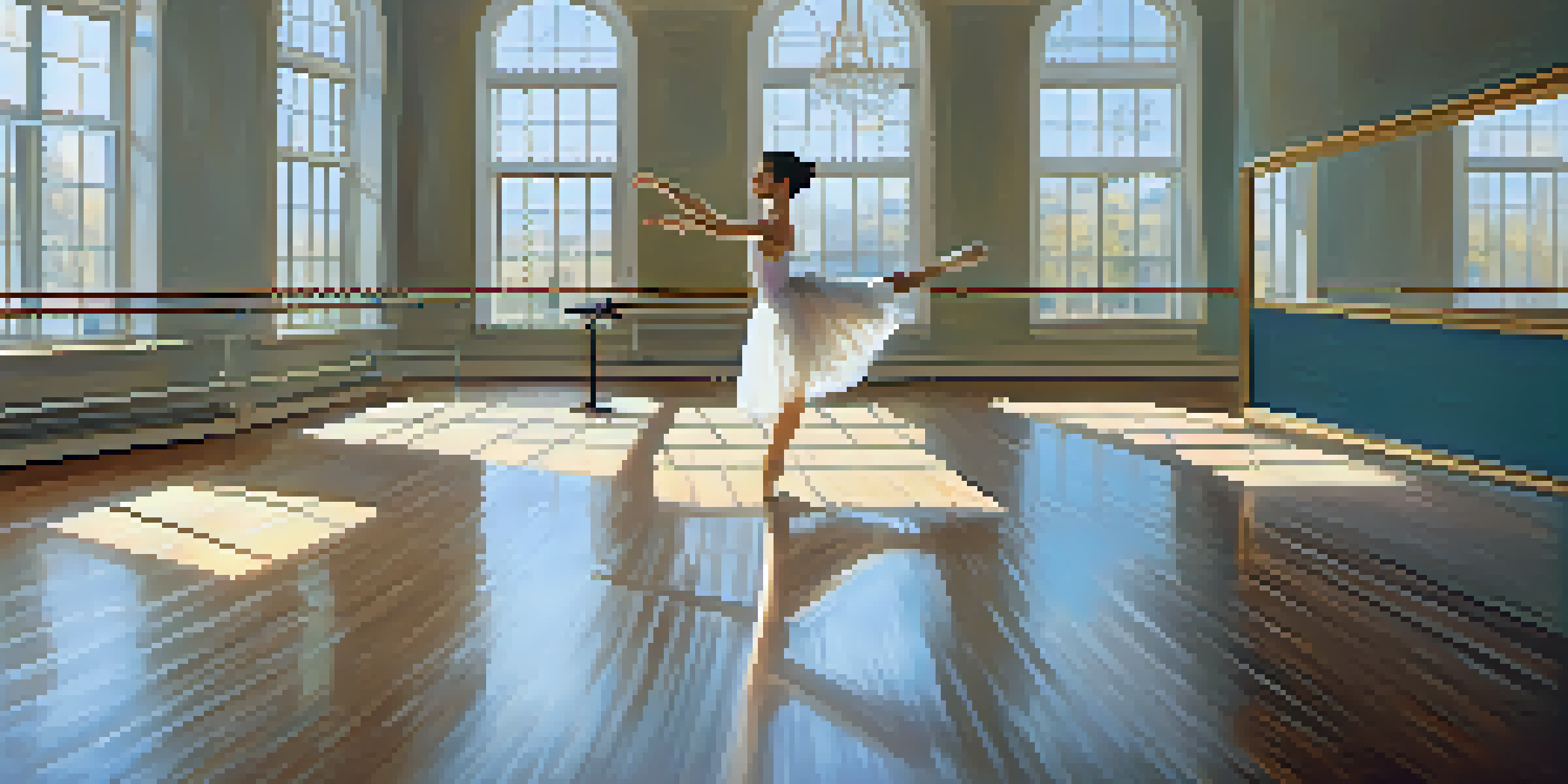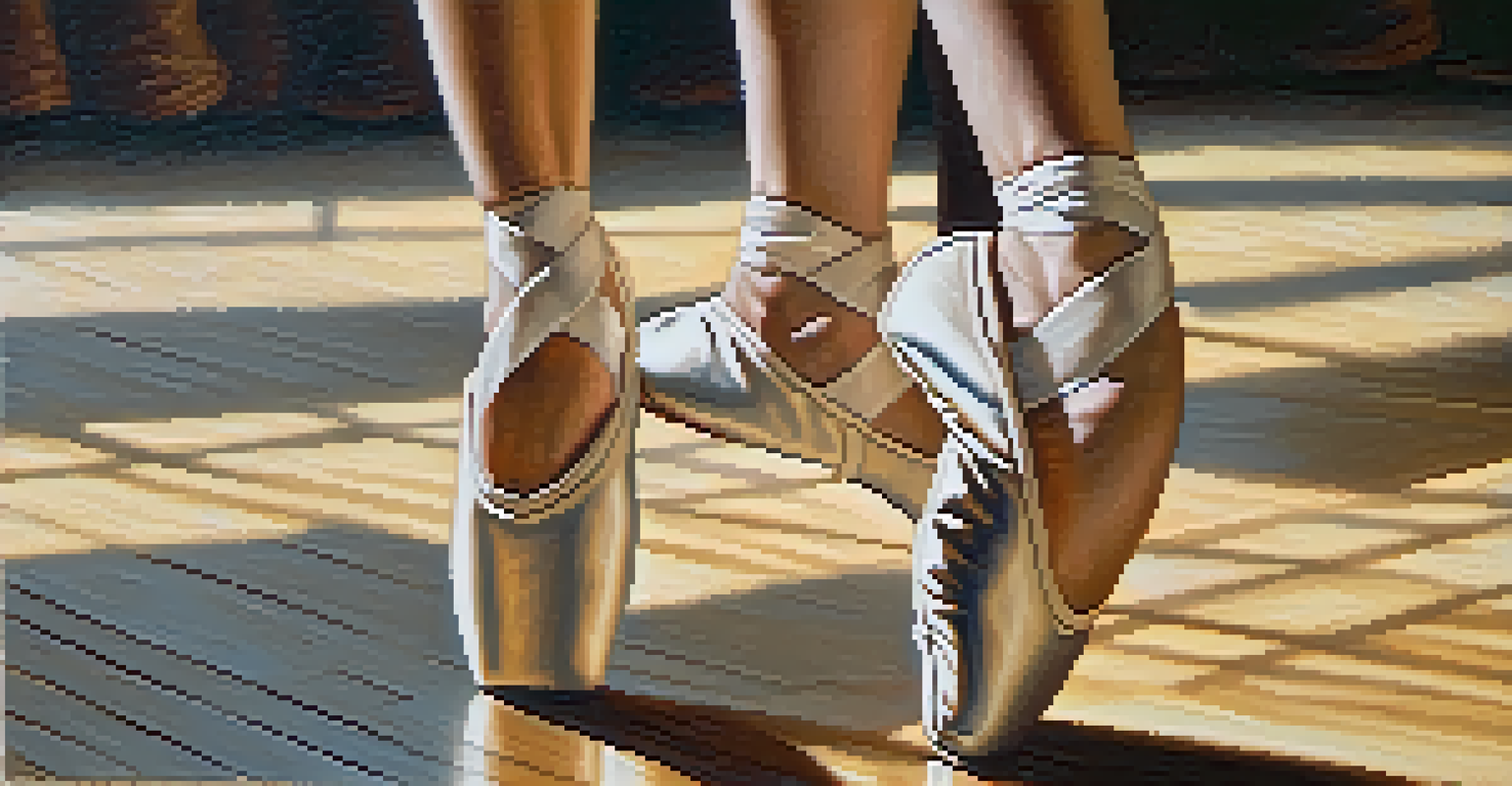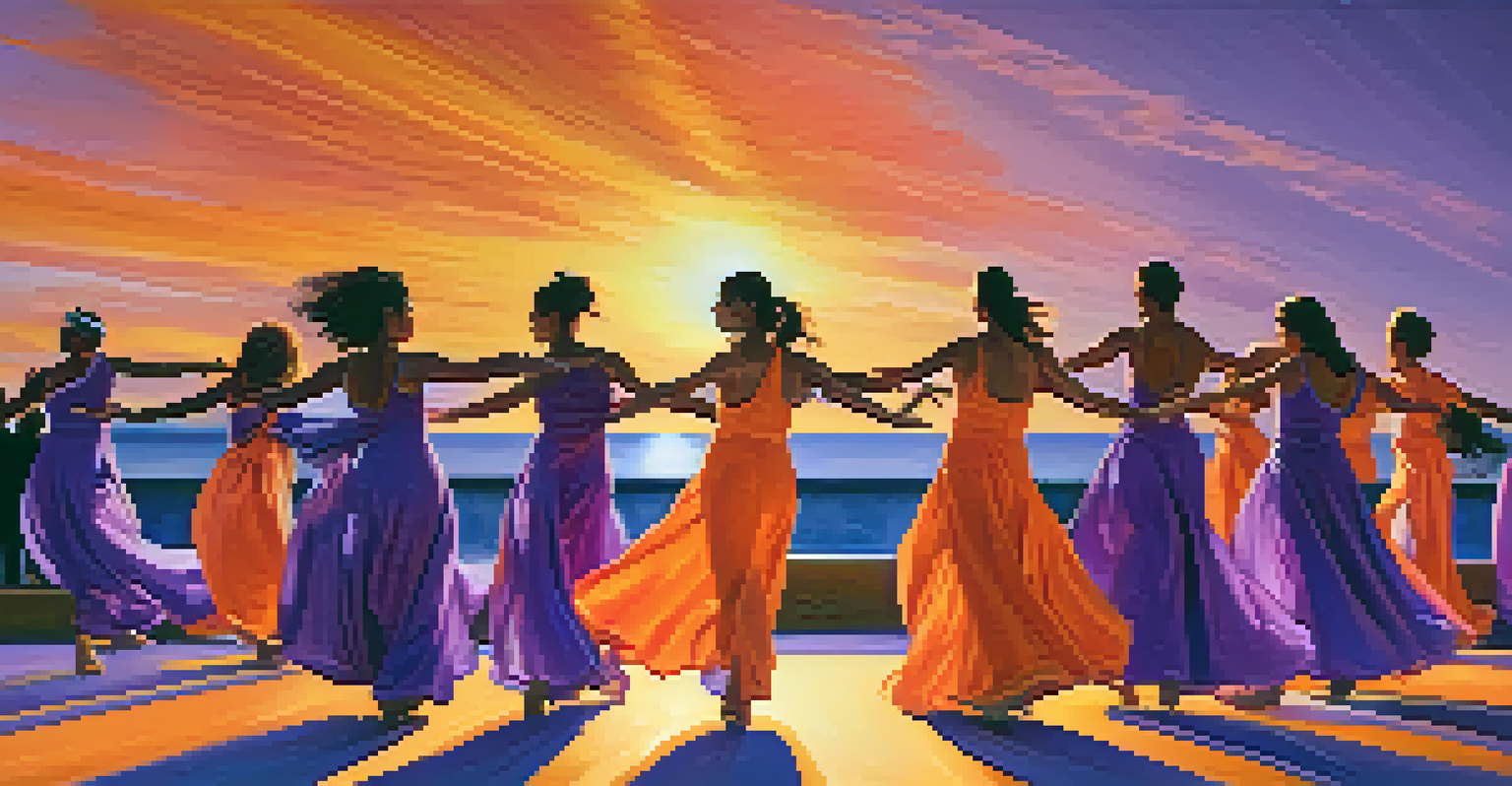Coping Strategies for Dancers Facing Performance Anxiety

Understanding Performance Anxiety in Dancers
Performance anxiety is a common experience among dancers, manifesting as nervousness or fear before a show. It can lead to physical symptoms like shaky hands or a racing heart, making it hard to focus. Understanding that this anxiety is a natural response can help dancers accept their feelings rather than fight them.
The only thing we have to fear is fear itself.
Many dancers share this struggle, and knowing you're not alone can be comforting. Conversations with fellow performers can reveal shared experiences and coping strategies. This sense of community can create a supportive environment where dancers feel understood and encouraged.
Recognizing performance anxiety as part of the artistic journey is crucial. Instead of letting it define their performance, dancers can learn to channel that energy into their art, transforming anxiety into a source of motivation and passion.
Breathing Techniques to Calm Your Nerves
Breathing techniques are one of the simplest yet most effective ways to manage anxiety. Techniques like deep diaphragmatic breathing can help slow down the heart rate and promote relaxation. By taking slow, controlled breaths, dancers can ground themselves and regain focus.

A popular method is the 4-7-8 technique: inhale for 4 seconds, hold for 7, and exhale for 8. Practicing this before performances can create a sense of calm and clarity. Incorporating these exercises into daily routines also builds resilience against anxiety over time.
Understanding Performance Anxiety
Recognizing that performance anxiety is a common experience among dancers can help them accept their feelings and channel that energy positively.
Moreover, breathing techniques can be practiced anywhere, making them a handy tool before stepping onto the stage. Dancers can use these moments to connect with their bodies and detach from anxiety, allowing for a more enjoyable performance experience.
Visualization: Envisioning Success on Stage
Visualization is a powerful technique that allows dancers to imagine themselves performing successfully. By mentally rehearsing their routines, dancers can create a sense of familiarity and confidence. This practice not only prepares them for the performance but also reduces anxiety levels.
What lies behind us and what lies before us are tiny matters compared to what lies within us.
To get started, dancers can find a quiet space, close their eyes, and visualize every detail of their performance. Imagining the audience’s positive reactions and feeling the joy of dancing can help solidify this confidence. Over time, these mental exercises can lead to improved performance outcomes.
Incorporating visualization into a dancer's training routine can lead to significant improvements. Just like athletes visualize winning a race, dancers can harness this technique to enhance their emotional and physical preparedness for the stage.
Creating a Pre-Performance Ritual
Establishing a pre-performance ritual can provide dancers with a sense of control and calm. Whether it’s stretching, listening to specific music, or even a brief meditation, having a routine helps signal to the body that it's time to perform. This familiarity can reduce anxiety and create a more focused mindset.
Rituals can be personal and unique to each dancer, making them feel more connected to their performance. For some, it might involve positive affirmations or visual reminders of past successes. Finding what works best is key, as it allows for a tailored approach to handling nerves.
Breathing Techniques for Calm
Practicing breathing techniques like the 4-7-8 method can significantly reduce anxiety and promote relaxation before performances.
Ultimately, a pre-performance ritual can act as a mental cue that boosts confidence and prepares dancers for the stage. This proactive approach can transform anxiety into excitement, allowing them to embrace the moment.
The Power of Positive Affirmations
Positive affirmations can be incredibly powerful in combating negative thoughts associated with performance anxiety. By repeating affirmations like 'I am a capable dancer' or 'I am prepared for this performance,' dancers can shift their mindset. This mental reframing can foster a more optimistic outlook.
Incorporating affirmations into daily routines—perhaps while getting ready or warming up—can reinforce self-belief. Over time, these positive statements can help dismantle the self-doubt that often accompanies anxiety. The more they are practiced, the more natural they become.
Surrounding oneself with supportive affirmations can also create a positive environment. Dancers can share their affirmations with peers, building a culture of encouragement that uplifts everyone involved.
Mindfulness and Staying Present in the Moment
Mindfulness practices encourage dancers to focus on the present, reducing the tendency to dwell on past mistakes or future worries. By incorporating mindfulness into their routines, dancers can enhance their awareness of their bodies and movements. This practice shifts attention away from anxiety and into the flow of performance.
Simple mindfulness techniques, such as body scans or focusing on breath, can ground dancers in the moment. Taking a few seconds to check in with oneself can foster greater connection to the performance. This awareness can lead to improved physical execution and overall enjoyment.
The Importance of Support Systems
Seeking support from instructors and peers fosters a sense of community that can alleviate performance anxiety and inspire personal growth.
Incorporating mindfulness into dance training can also lead to long-term benefits. As dancers become more attuned to their bodies, they can develop a greater appreciation for the art form, making performance a joyful expression rather than a source of stress.
Seeking Support from Instructors and Peers
Reaching out for support from instructors or peers can be a game-changer for dancers dealing with performance anxiety. Open communication about feelings of anxiety can foster a supportive community where dancers feel safe sharing their struggles. This connection can lighten the emotional burden and help them feel less isolated.
Instructors can provide valuable guidance and reassurance, often having faced similar challenges themselves. They can offer strategies or feedback that can help dancers feel more prepared and confident. Additionally, support from fellow dancers can create a sense of camaraderie, reminding them that they are not alone in their experiences.

Ultimately, seeking support can lead to a healthier relationship with performance. The act of sharing concerns can not only alleviate anxiety but also inspire personal growth and resilience within the dance community.